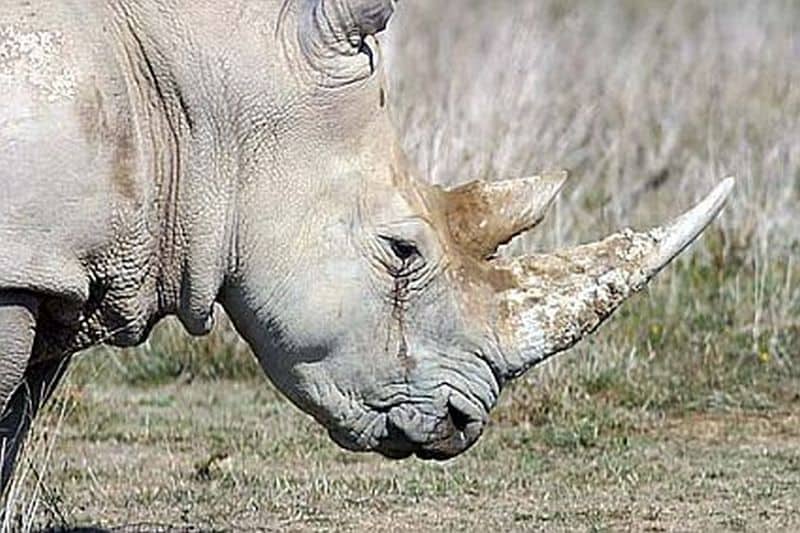The first aerial survey of southern Sudan in 25 years has revealed vast migrating herds, rivaling those of the Serengeti plains that have managed to survive 25 years of civil war.
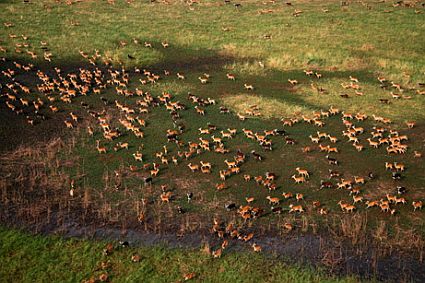
A herd of white-eared kob antelope run along the Kangen River in Southern Sudan’s Boma National Park.
Aerial surveys by the New York-based Wildlife Conservation Society confirm the existence of more than 1.2 million white-eared kob, tiang antelope and Mongalla gazelle in Southern Sudan.
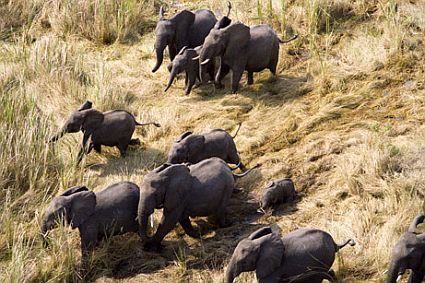
Elephants young and old race across the wetlands of the Sudd.
J. Michael Fay, a conservationist with the Wildlife Conservation Society (WCS) and a National Geographic Explorer-in-Residence, along with Southern Sudan program director Paul Elkan, and Malik Marjan, a Ph.D. candidate from Southern Sudan conducted the survey project.
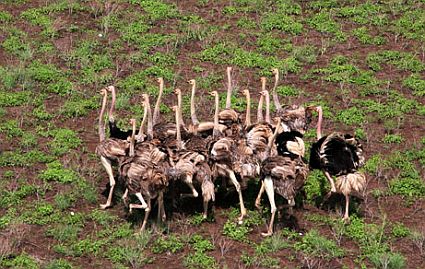
A group of ostriches march across the savannas of Southern Sudan.
Kob, a type of antelope, are believed to number between 800,000 and 1.2 million in the region. Their movement through Southern Sudan rivals the great wildebeest migration of the Serengeti.
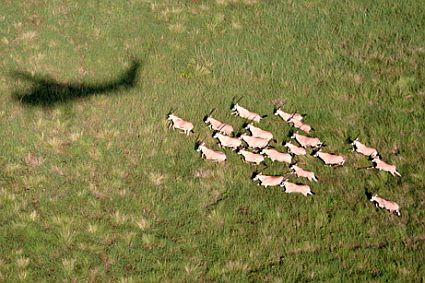
Nineteen beisa oryx antelope-previously thought to be extinct in Southern Sudan, appear to chase the shadow of a survey plane in Boma National Park.
Also found during the survey were many other antelope species, including beisa oryxes, which some Sudanese officials said were extinct in the region; 4,000 Nile lechwes, thought to have been nearly wiped out; 250,000 Mongalla gazelles; 160,000 tiangs; and 13,000 reedbucks. The survey also reported 2,800 ostriches and at least 8,000 elephants in the region.
In the absence of access to the troubled region, experts had speculated that poachers and rebel forces hunting for food would have completely wiped out the local animals. Some sure have been wiped out especially west of the Nile River, in the Southern National Park, 60,000 buffalo were counted there in the 1980s where today there are none to be found.
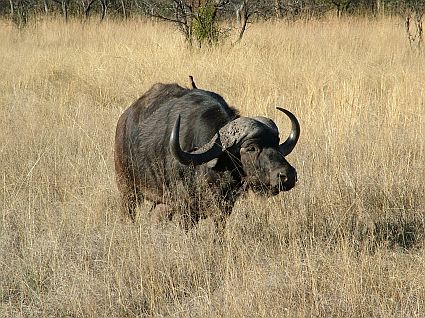
African Buffalo, Image credit
Rare white rhinoceroses spotted before are nowhere to be seen. Most of the sedentary animals fell victim to poachers and rebels with the Sudan People’s Liberation Army, which was living off the land. Elephant populations were 10,000, but the new surveys found only one group.
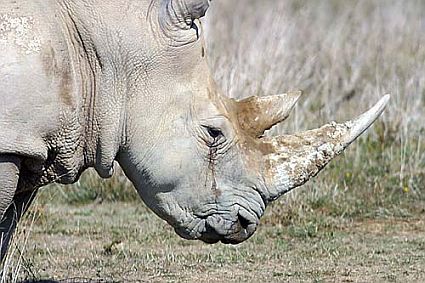
White Rhino, Image credit
What dangers does this wild life face?
Widespread seismic exploration in the hope to exploit vast oil reserves has already taken place, some of it in areas inhabited by wildlife.
Widespread automatic weapons used during the conflict are now being used by unauthorized individuals for poaching and commercial, unsustainable hunting.
Hundreds of thousands of refugees, many of them pastoralists who have lived outside the region for decades, are now pouring back into the region. They will place additional demands on the land as they struggle to piece together their old lives
The international aid community is building roads, hospitals, schools and commercial networks in the area without determining how this will affect the wildlife and without appropriate environmental impact assessments and mitigation plans in place.
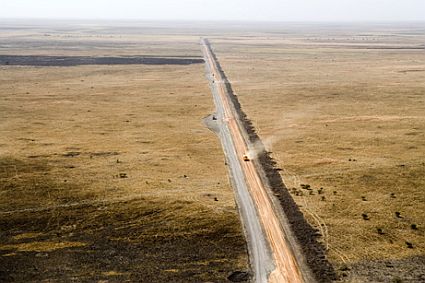
Oil surveyors will use this road under construction in Southern Sudan’s Jonglei region.
Sudan needs to safeguard the region’s wildlife and wild lands, which may now rank among the richest in Africa. The government’s commitment to wildlife preservation at a time when it wants to exploit vast oil reserves, for economic stability in lands teeming with wildlife will be tested. The need of the hour is to make a sustainable plan for natural resource management and extractive industries that gets the economy going as well as preserves wildlife.
Image credits: National Geographic
Source: News wise


